| Picture |
Information |
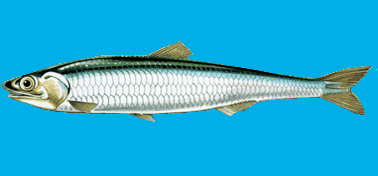
|
Anchovy (Engraulis encrasicholus) - The anchovy is a small green fish with blue reflections dorsal to a silver longitudinal stripe that runs from the base of the caudal fin.
Habitat -
It is generally very accepting of a wide range of temperatures and salinity. Large schools can be found in shallow, brackish areas with muddy bottoms, as in estuaries and bays.
Diet - It eats plankton and fish larvae.
|
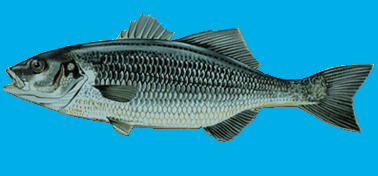
|
European Sea Bass (Dicentrarchus labrax) -
A silver-coloured fish, with a white belly and sharp spines and gill flaps.
Habitat - Can be found very close to the shore often, loving the surf.
Diet - Mackerel Fillet, small Pout live/dead, Lugworm, Ragworm, Peeler Crab.
|
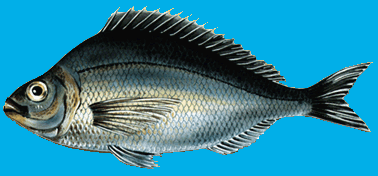
|
Black Sea Bream (Brama brama) - Young fish have silvery flanks with many pale broken lines along them and a wide dark band on the tail; adults may be silvery or dark blue-grey, almost black in mating males, and may have alternating dark and silver vertical stripes on their sides. Adults are usually 35 - 40 cm long.
Habitat - bottom to lower water shoaling fish, most often found in rocky and weedy ground, reefs and wrecks.
Diet - Bottom dwelling invertebrates and crustaceans, along with encrusted algae and small fish.
|
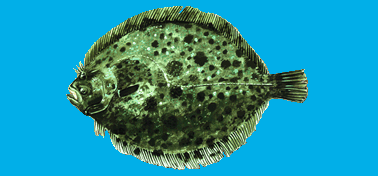
|
Brill (Scophthalmus rhombus) - An oval shaped Flatfish,light to dark green smooth skin. Very similar to, and often mistaken for Turbot having virtually the same feeding habits.
Habitat - They can be found in depths of up to 50 m, on sandy or mixed substrates.
Diet - It feeds mainly on small fish and crustaceans.
|
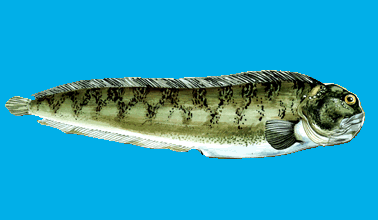
|
Catfish (Anarhichas lupus) - The Atlantic wolffish , also known as the Seawolf, Atlantic catfish, ocean catfish, wolf eel.
Habitat - living on the hard ocean floor, frequently seen in nooks and small caves. They like cold water, at depths of 76 to 120 meters (250 to 400 ft).
Diet - Atlantic wolffish use their strong jaws to eat hardshell mollusks, crustaceans, and echinoderms. They do not eat other fish.
|
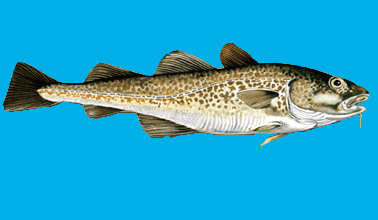
|
Cod (Gadus morhua) - The back tends to be a greenish to sandy brown, and showing extensive mottling especially towards the lighter sides and white belly. Dark brown colouration of the back and sides is not uncommon especially for individuals who have resided in rocky inshore regions.
Habitat - Widespread, larger fish prefer reefs / wrecks.
Diet - Cod feed on molluscs, crabs, starfish, worms, squid, and small fish. Lugworm, squid, Peeler crab.
|
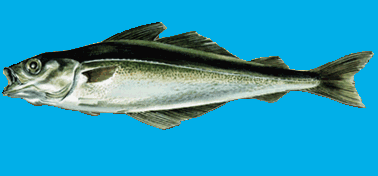
|
Coley (Pollachius virens) - Lateral line smooth along its entire length. Body color is brownish-green dorsally, becoming only slightly paler ventrally.
Habitat - depth range 37 - 364 m. They are found inshore and in offshore waters. They enter coastal waters in spring and they return to deeper water in winter.
Diet - Smaller fish in inshore waters. they feed on small crustaceans (copepods, amphipods, euphausiids) and small fish, while larger fish prey predominantly upon fish.
|

|
Conger Eel (Conger conger) - A long type of fish (Snake like) they are often seen between the length of 1.5m and 3m.
Habitat - Conger Eels favour very rough ground and inhabit deepwater wrecks, reefs and broken ground. In shallow waters Conger are mostly nocturnal feeders, but in depths of 60ft or more they feed at any time.
Diet - They will take fish baits, crab, cuttlefish and squid. The most popular bait is a mackerel 'flapper' produced by taking the whole fish and removing the backbone and tail, allowing the flanks and innards to flutter in the tide. If it is available, a whole live pout can prove deadly.
|
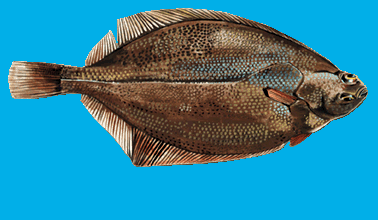
|
Dab (Limanda limanda) - Oval shaped fish with a rough dark brown skin.
Habitat - The Dab can be found on sand / shell grit bottoms.
Diet - Lugworm, Ragworm, stale Lugworm is commonly used Methods - Fishing 3 baits close to the shore.
|
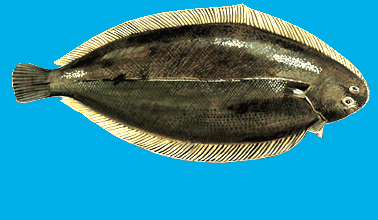
|
Dover Sole (Microstomus pacificus) - Oval shaped fish with a rough dark brown skin.
Habitat - Burrows into sandy and muddy bottoms.
Diet - Feeds on worms, mollusks and small crustaceans at night.
|
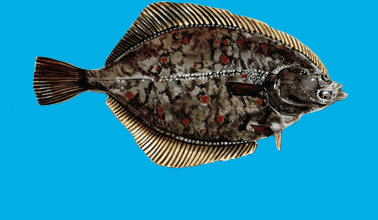
|
European Flounder (Platichthys flesus) - Oval shaped fish with a rough dark brown skin.
Habitat - Widesread, Normally found close to the shore, sometimes within just a couple of feet.
Diet - Ragworm, Lugworm, Peeler crab in spring.
|
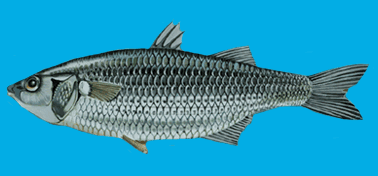
|
Grey Mullet (Chelon labrosus) - Olive green dorsally, the sides are silvery, shading to white ventrally; Lateral stripes which sometimes distinctive, the Lips thin, the Pectoral fins are short. 3 Anal spines in adults; anal soft rays 8 in adults.
Habitat - Coastal species that often enter estuaries and rivers. Usually in schools over sand or mud bottom between 0 and 10 m.
Diet - They feed on zooplankton as larvae, detritus, micro-algae and benthic organisms as juvenile and adult fish.
|
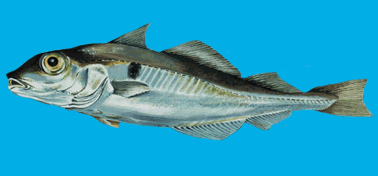
|
Haddock (Melanogrammus aeglefinus) - Recognised by the black skin with dark spot behind gills.
Habitat - Adults are found more commonly from 80 to 200 m, over rock, sand, gravel or shells, usually at temperatures between 4° and 10°C.
Diet - Feed mainly on small bottom living organisms including crustaceans, mollusks, echinoderms, worms and fish.
|

|
Hake (Merluccius merluccius) - Recognised by the silvery skin and many teeth.
Habitat - depth range 30 - 1075 m. Found usually between 70 and 370 m depth. Adults live close to the bottom during the day time, but move off the bottom at night.
Diet - Adult fish feed mainly on fish (small Hake, Anchovies, Pilchard, Herring, Cod, Sardine and gadoid species) and squid. The young fish feed on crustaceans (especially euphausiids and amphipods).
|
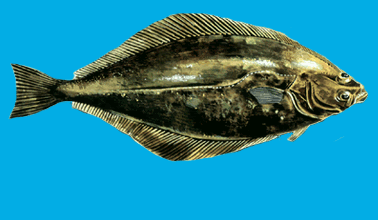
|
Atlantic Halibut (Hippoglossus hippoglossus) -
It is dark brown or black, and the young are marbled or spotted with paler marks.
Habitat -
Found in the depth range 50m - 2000m.
Diet - They feed mainly on other fish (Cod, Haddock, Pogge, Sand Eels, Herring, Capelin), but they also take, cephalopods, large crustaceans and other bottom living animals.
|
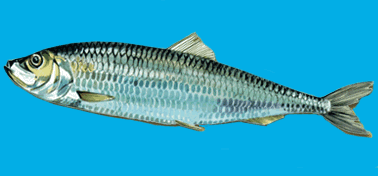
|
Atlantic Herring (Clupea harengus) - Silvery, with bluish or greenish blue back.
Habitat - Found in the depth range of 0m - 364m.
Diet -
They feed on small planktonic copepods in the first year, thereafter mainly on copepods.
|

|
Hoki (Macruronus novaezelandiae) - Dorsal surface silvery, with a purple or blue/green tinge; plank and belly silvery; fins darker. Body very elongated and compressed with a tapering tail.
Habitat -
Appear to live usually on or near the bottom, but may occasionally move up into mid-waters. Large adult fish generally occur deeper than 400 m, while juveniles may be found in shallower water.
Diet -
Feed primarily on lantern fishes. In New Zealand, it feeds in midwater on small fish, crustaceans and squid.
|
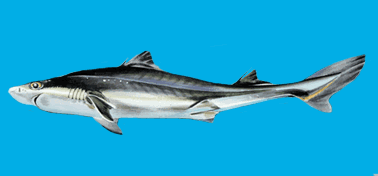
|
Huss (Squalus acanthias) - Shark like, but much smaller upto 160cm in length.
Habitat - Often found in enclosed bays and estuaries at all heights in the water.
Diet - Squid, Cuttlefish, Sand Eel or Mackerel.
The only species of horned sharks that can inflict toxins with its tail.
|
|

